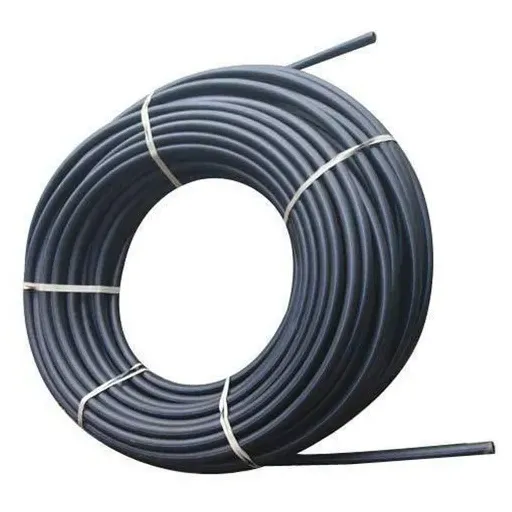High-Density Polyethylene (HDPE) pipes have established themselves as one of the most versatile piping systems of our time. Recognized for their durability, flexibility, chemical resistance, and corrosion resistance, HDPE pipes serve across industries including water supply, gas distribution, agriculture, and industrial applications. This comprehensive guide will help you navigate the world of HDPE piping with confidence.
HDPE Pipe Size Specifications
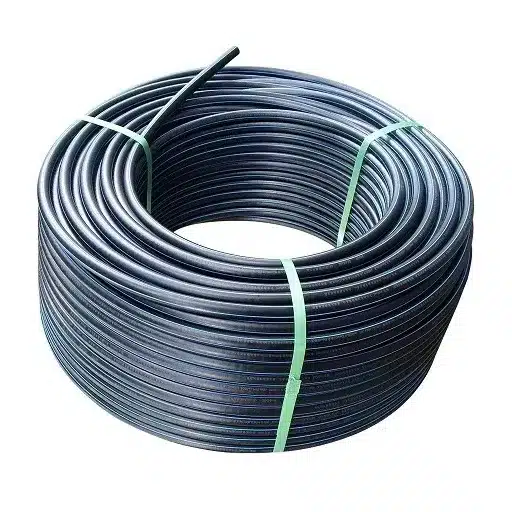
Overview of HDPE Pipe Sizes
HDPE piping systems are manufactured in extensive diameter ranges to accommodate diverse industrial applications, including:
- Water distribution systems
- Sewage systems
- Gas pipelines
- Industrial processes
These sizes are classified by their outside diameter (OD) and wall thickness, which directly affect the pressure rating. The dimensional system generally follows standards such as ASTM-D3035 or ISO 4427 for uniformity and compatibility.
Key Sizing Concepts:
- Nominal Diameter (DN): Standard measurement reference
- Standard Dimension Ratio (SDR): Ratio between the pipe’s OD and wall thickness
- Size Range: From ½ inch (DN 15) up to 63 inches (DN 1600)
Common Sizes and Their Applications
Residential plumbing: Faucets, showers, minor irrigation systems. Ideal for low-moderate flows and pressure.
Larger residential services: Sprinkler systems, water distribution. Balanced for moderate flow requirements.
Commercial applications: Small industrial establishments, large-scale irrigation. Higher flow rates, moderate pressure.
Municipal systems: Water mains, stormwater drainage, fire suppression. High operational pressure capability.
Large municipal networks: Major water distribution, industrial infrastructure. Maximum flow rates with minimal pressure drop.
Understanding SDR and IPS Ratings
| Rating System | Description | Key Benefits | Applications |
|---|---|---|---|
| SDR (Standard Dimension Ratio) | Ratio of pipe outside diameter to wall thickness | Lower SDR = thicker walls = higher pressure resistance | Critical pressure applications |
| IPS (Iron Pipe Size) | Dimensioning based on nominal diameter and wall thickness | Ensures compatibility across systems and fittings | Industrial, commercial, municipal networks |
Real-World Applications of HDPE Pipes
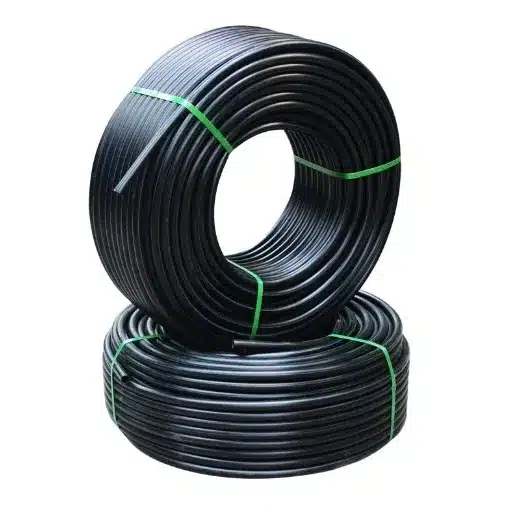
Construction and Infrastructure
HDPE pipes excel in civil engineering and infrastructure projects due to their exceptional properties:
Durability
High strength-to-density ratio withstands internal and external pressures
Installation Efficiency
Lightweight design enables easy transport and installation
Leak-Proof Performance
Fusion-welded joints create seamless, reliable connections
Trenchless Compatible
Works with horizontal directional drilling (HDD) methods
Agricultural Applications
HDPE pipes have revolutionized modern agricultural operations with their versatility and durability:
- Irrigation Systems: UV-resistant pipes for drip and sprinkler systems, achieving up to 50% water savings compared to conventional irrigation
- Drainage Solutions: Smooth internals enable free water flow, preventing soil erosion and waterlogging
- Fertilizer and Chemical Application: Chemical-resistant properties ensure safe distribution of liquid fertilizers and pesticides
- Aquaculture Systems: Safe water supply and drainage for fish farming without adverse effects on aquatic life
- Greenhouse Watering Systems: Temperature-tolerant pipes ensure uniform water distribution in controlled environments
Water Management Systems
Smart Water Management: Modern systems integrate IoT sensors, data analysis, and automated controls for real-time monitoring of soil moisture, weather conditions, and water flow. Research shows these technologies can reduce agricultural water consumption by up to 40% while enhancing crop yields.
Benefits of Using HDPE Pipes
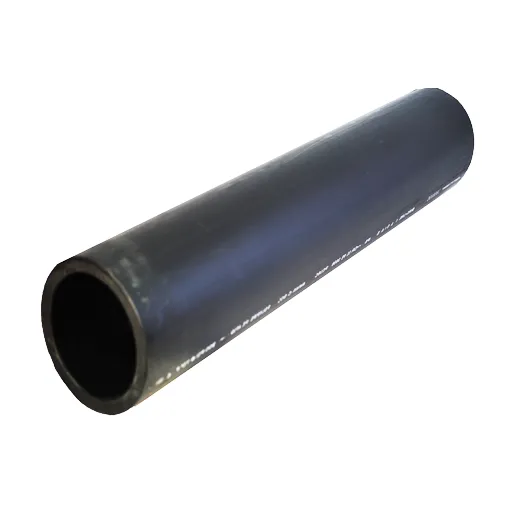
Durability and Longevity
- Service Life: 50-100 years under standard conditions
- Chemical Resistance: Withstands corrosion, rusting, and scaling
- Impact Resistance: Absorbs surge pressures and high-impact loading
- Climate Resilience: Maintains performance in extreme temperatures
Flexibility and Installation Advantages
- Superior Flexibility: Bends around obstacles with minimal joints
- Lightweight Design: Reduces labor costs and equipment needs
- Trenchless Installation: Compatible with HDD and pipe bursting methods
- Advanced Welding: Butt fusion and electrofusion create leak-proof joints
Corrosion Resistance
HDPE’s molecular structure prevents oxidation and chemical degradation:
- No cathodic protection required
- Resists chlorine, acids, and alkalis
- Smooth interior prevents scaling and blockages
- Maintains consistent flow rates over decades
Comparing HDPE with Other Pipe Materials
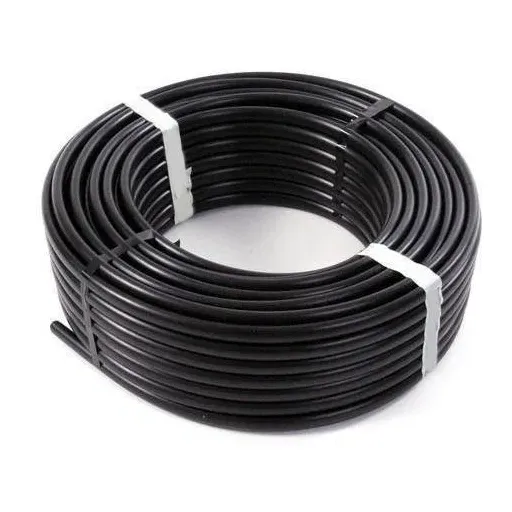
HDPE vs. PVC Pipes
| Aspect | HDPE | PVC |
|---|---|---|
| Composition | High-density polyethylene | Polyvinyl chloride |
| Flexibility | Superior | Limited |
| Longevity | Excellent | Moderate |
| UV Tolerance | High | Low |
| Temperature Range | -40°F to 140°F | -10°F to 140°F |
| Pressure Handling | Strong | Average |
| Connection Method | Heat fusion | Solvent cement |
| Applications | Gas, water, sewage | Sewage, irrigation |
HDPE vs. Metal Pipes
| Aspect | HDPE | Metal (Steel/Iron) |
|---|---|---|
| Weight | Lightweight | Heavy |
| Corrosion Resistance | Excellent | Prone to rust |
| Service Life | 50-100 years | 20-50 years |
| Installation Complexity | Easy | Complex |
| Total Project Cost | 25-40% lower | Higher overall |
| Maintenance Requirements | Minimal | Frequent |
| Environmental Impact | Recyclable | High energy production |
Choosing the Right HDPE Pipe Size
Critical Factors to Consider
Flow Rate Requirements
Calculate volume per time span using Hazen-Williams or Darcy-Weisbach equations
Operating Pressure
Select an appropriate SDR rating based on internal pressure requirements
Temperature Variations
Account for thermal expansion and contraction in varying climates
Installation Requirements
Consider pipe lengths and joining methods (butt fusion vs. electrofusion)
Environmental Conditions
Evaluate soil type, corrosiveness, and load-bearing requirements
Regulatory Compliance
Ensure adherence to national, international, and industry-specific standards
Budget and Cost Considerations
Initial Investment Factors:
- Material costs (typically lower due to lightweight design)
- Transportation expenses (reduced due to lighter weight)
- Installation costs (simplified by flexibility and fusion joining)
- Specialized equipment for fusion welding
Long-term Financial Benefits:
- Minimal maintenance requirements
- Reduced energy costs due to smooth interior surfaces
- Lower downtime and replacement frequency
- Environmental compliance cost savings
Environmental Impact and Sustainability
Environmental Advantages: HDPE systems are environmentally friendly due to their durability, recyclability, and non-toxic properties. They require less energy for manufacturing and have extended service lives, reducing the environmental burden of frequent replacements.
Frequently Asked Questions (FAQ)
A: Common HDPE pipe sizes range from ½ inch to 63 inches in diameter, covering applications from residential plumbing to large municipal water systems. The most frequently used sizes include 1″, 2″, 4″, 6″, 8″, and 12″ diameters.
A: Consider flow requirements, operating pressure, temperature variations, and environmental conditions. Review size charts detailing inside diameter, pressure ratings, and specific applications for each pipe size.
A: Larger pressure ratings require thicker walls and stronger pipes. The SDR (Standard Dimension Ratio) determines pressure capability – lower SDR numbers indicate thicker walls and higher pressure resistance.
A: Yes, HDPE pipes are commonly used in natural gas distribution due to their environmental resistance, flexibility, and ability to withstand seismic activities and temperature extremes.
A: IPS (Iron Pipe Size) uses nominal pipe diameter standards, while CTS (Copper Tube Size) typically involves smaller sizes for plumbing applications. Understanding these differences is crucial for proper pipe selection.
A: Manufacturing processes significantly impact density, strength, and overall quality. High-density polyethylene construction ensures durability and environmental resistance across various applications.
A: Agricultural irrigation systems benefit from HDPE pipes’ flexibility and size variety. Common sizes range from 1″ for small-scale applications to 6″ or larger for main distribution lines, depending on coverage area and flow requirements.
A: Yes, wastewater systems require specific sizing based on discharge volume and pressure conditions. Common sizes range from 4″ to 24″ or larger, designed for effective sewage and wastewater management.
References and Standards
- Design Standard – Underground Piping Installations – Texas A&M University
- SW-103 Specification – Iowa State University (HDPE pipe dimensions and burial depths)
- Water Distribution Piping Standards – University of Missouri System
- ASTM-D3035 – Standard specification for polyethylene pressure pipe
- ISO 4427 – International standard for HDPE pipe systems
Conclusion: HDPE pipes offer unmatched versatility, durability, and cost-effectiveness across diverse applications. By understanding size specifications, applications, and selection criteria, you can make informed decisions that ensure optimal performance and long-term reliability for your infrastructure projects.



